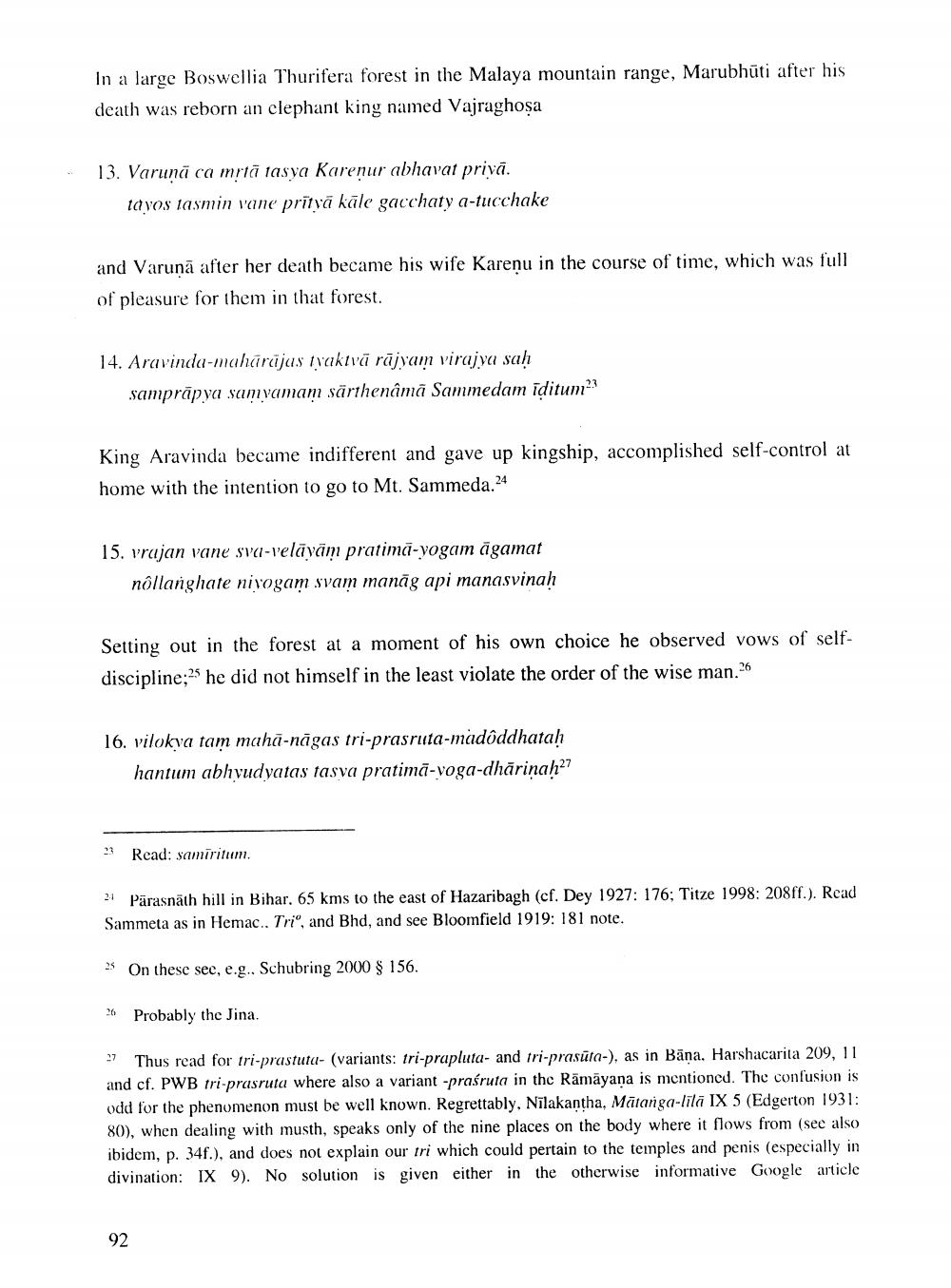________________
In a large Boswellia Thurifera forest in the Malaya mountain range, Marubhūti after his death was reborn an clephant king named Vajraghoşa
13. Varunā ca mrtā tasya Karenur abhavat priva.
tavos tasmin vane pritvā kāle gacchaty a-tucchake
and Varunā after her death became his wife Karenu in the course of time, which was full of pleasure for them in that forest.
14. Aravinda-mahártijas tvaktvā rājyam virajya sah
sampräpya sam vamam särthenämä Sammedam iditum
King Aravinda became indifferent and gave up kingship, accomplished self-control at home with the intention to go to Mt. Sammeda.24
15. vrajan vane sva-velāvām pratima-yogam agamat
nộllanghate nivogam svam manāg api manasvinah
Setting out in the forest at a moment of his own choice he observed vows of selfdiscipline;25 he did not himself in the least violate the order of the wise man.26
16. vilokva tam mahā-nāgas tri-prasruta-madóddhatah
hantum abhyudyatas tasva pratimā-voga-dhārinah27
23 Read: samiritum.
21 Pārasnäth hill in Bihar. 65 kms to the east of Hazaribagh (cf. Dey 1927: 176; Titze 1998: 208ff.). Read Sammeta as in Hemac.. Trio, and Bhd, and see Bloomfield 1919: 181 note.
25 On these see, e.g., Schubring 2000 & 156.
24
Probably the Jina.
27 Thus read for tri-prastuta- (variants: tri-prapluta- and tri-prasūta-), as in Bāna. Harshacarita 209, 11 and cf. PWB tri-prasruta where also a variant -praśruta in the Rāmāyana is mentioned. The confusion is odd for the phenomenon must be well known. Regrettably, Nīlakantha, Mātanga-lilā IX 5 (Edgerton 1931: 80), when dealing with musth, speaks only of the nine places on the body where it flows from (see also ibidem, p. 34f.), and does not explain our tri which could pertain to the temples and penis (especially in divination: IX 9). No solution is given either in the otherwise informative Google article
92




